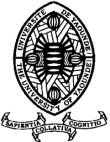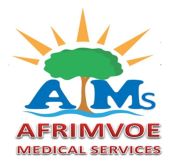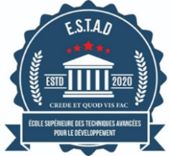An Unexpected Dystocia after Head Delivery, Linked to a Large Sacrococcygeal Teratoma in a Situation of Limited Resources and Insecurity due to Terrorist Armed Groups in Burkina Faso
Dystocie après Accouchement de la Tête Liée à un Volumineux Tératome Sacrococcygien en Situation de Ressources Limitées et d’Insécurité Liée aux Groupes Armés Terroristes
DOI:
https://doi.org/10.5281/hra.v2i5.5590Keywords:
Sacrococcygeal teratoma, dystocia, OuahigouyaAbstract
RÉSUMÉ
Le tératome sacro-coccygien est une tumeur rare qui se développe au cours de la vie intra-utérine et qui atteint surtout le sexe féminin. Nous rapportons le cas d’une patiente de 28 ans ayant réalisé 5 consultations prénatales sans échographie du fait d’un contexte marqué par l’accessibilité limitée à l’échographie, et une atmosphère sécuritaire précaire du fait de groupes armés terroristes. Elle a été évacuée au centre hospitalier universitaire régional d’Ouahigouya pour une rétention du siège après l’accouchement de la tête et des épaules. A son admission, l’échographie a noté une volumineuse masse liquidienne de la partie caudale du tronc. Une ponction transpariétale échoguidée a permis le dégagement du siège après l’évacuation de 800 cc. Le nouveau-né vivant était porteur d’un volumineux tératome sacrococcygien, et a été pris en charge dans un centre spécialisé avec des suites favorables pour lui et sa mère.
ABSTRACT
The sacrococcygeal teratoma is a rare tumor that develops during intrauterine life and mainly affects females. We report the case of a 28-year-old patient who had 5 prenatal consultations without ultrasound due to limited accessibility to ultrasound, and a precarious security situation due to terrorist armed groups. She was evacuated to the regional university hospital of Ouahigouya for retained breech after delivering the head and shoulders. On admission, the ultrasound noted a large liquid mass in the caudal part of the trunk. A transparietal ultrasound-guided puncture allowed the release of the breech after evacuating 800 cc. The newborn, who was alive, had a large sacrococcygeal teratoma and was managed in a specialized center with favorable outcomes for both the baby and the mother
References
Avni F, Verpillat P, Vaast P, Rocourt N, Sfeir R. Les tératomes, leurs caractéristiques en imagerie fœtale et pédiatrique. Consulté le 4 novembre 2023 sur : https://www.sfip-radiopediatrie.org/wp-content/uploads/2018/07/avni_trousseau_2015-1.pdf
Veyckemans F, Scholtes JL. Syndromes et maladies rares en pédiatrie. Consulté le 3 novembre 2023 sur : https://sites.uclouvain.be/anesthweekly/MRP/index.html?TeratomeSacro-coccygien
Chagou M, Bernoussi K. Tératome sacro-coccygien : à propos d’un cas. Pan Afr Med J. 20 févr 2015;20:160. DOI: 10.11604/pamj.2015.20.160.5553
El‐Shafie M, Naylor D, Schaff E, Conrad M, Miller D. Unexpected dystocia secondary to a fetal sacrococcygeal teratoma: A successful outcome. Int J Gynecol Obstet. déc 1988;27(3):431‑8. Doi: 10.1016/0020-7292(88)90126-9
Makin EC, Hyett J, Ade-Ajayi N, Patel S, Nicolaides K, Davenport M. Outcome of antenatally diagnosed sacrococcygeal teratomas: single-center experience (1993-2004). J Pediatr Surg. févr 2006;41(2):388‑93. Doi: 10.1016/j.jpedsurg.2005.11.017
Friédérich L, Diguet A, Eurin D, Bachy B, Roman H, Marpeau L, et al. Tératome sacrococcygien de la taille du fœtus: surveillance anténatale, thérapeutique fœtale in utero et prise en charge obstétricale. Gynécologie Obstétrique Fertil. oct 2007;35(10):1001‑4. Doi: 10.1016/j.gyobfe.2007.07.030
Stefanovic V, Halmesmäki E. Peripartum Ultrasound-Guided Drainage of Cystic Fetal Sacrococcygeal Teratoma for the Prevention of the Labor Dystocia: A Report of Two Cases. AJP Rep. déc 2011;1(2):87‑90. Doi: 10.1055/s-0031-1284220
Graesslin O, Martin-Morille C, Dedecker F, Gabriel R, Quereux C. Tératomes sacrococcygiens. Y a-t-il une place pour le traitement in utero des formes compliquées ? À propos de trois cas. Gynécologie Obstétrique Fertil. juin 2004;32(6):519‑24. Doi: 10.1016/j.gyobfe.2004.03.018
Downloads
Published
How to Cite
Issue
Section
License
Copyright (c) 2024 HEALTH RESEARCH IN AFRICA

This work is licensed under a Creative Commons Attribution-NoDerivatives 4.0 International License.
Authors who publish with this journal agree to the following terms:
- Authors retain copyright and grant the journal right of first publication with the work simultaneously licensed under a Creative Commons Attribution License CC BY-NC-ND 4.0 that allows others to share the work with an acknowledgement of the work's authorship and initial publication in this journal.
- Authors are able to enter into separate, additional contractual arrangements for the non-exclusive distribution of the journal's published version of the work (e.g., post it to an institutional repository or publish it in a book), with an acknowledgement of its initial publication in this journal.
- Authors are permitted and encouraged to post their work online (e.g., in institutional repositories or on their website) prior to and during the submission process, as it can lead to productive exchanges, as well as earlier and greater citation of published work










